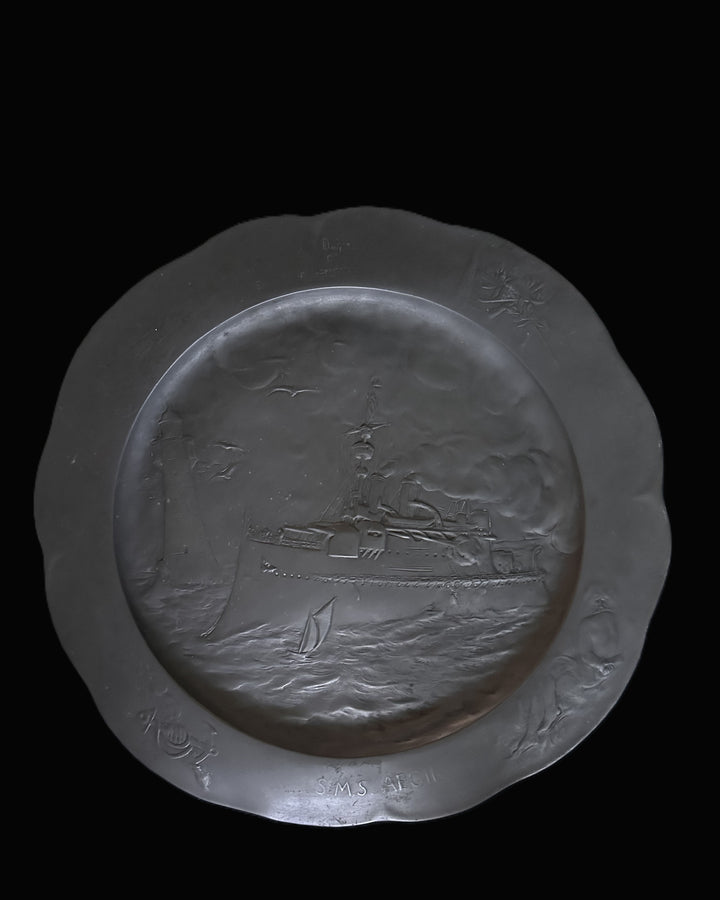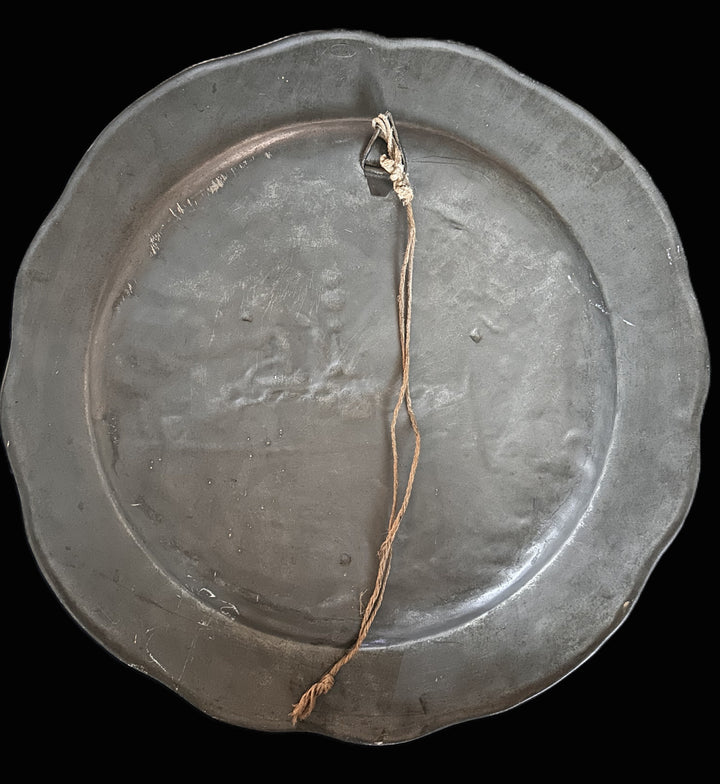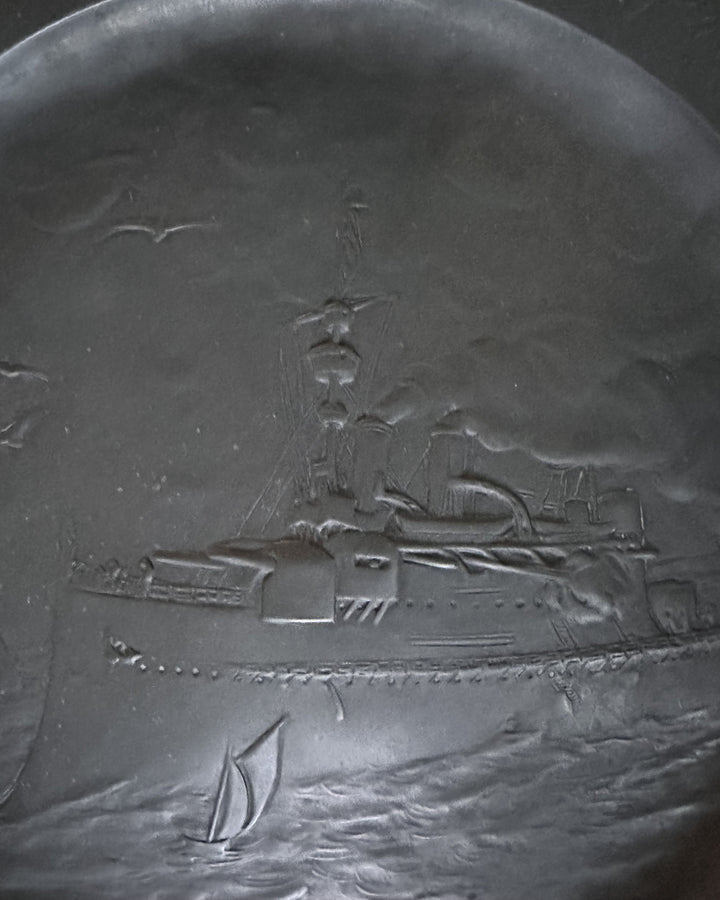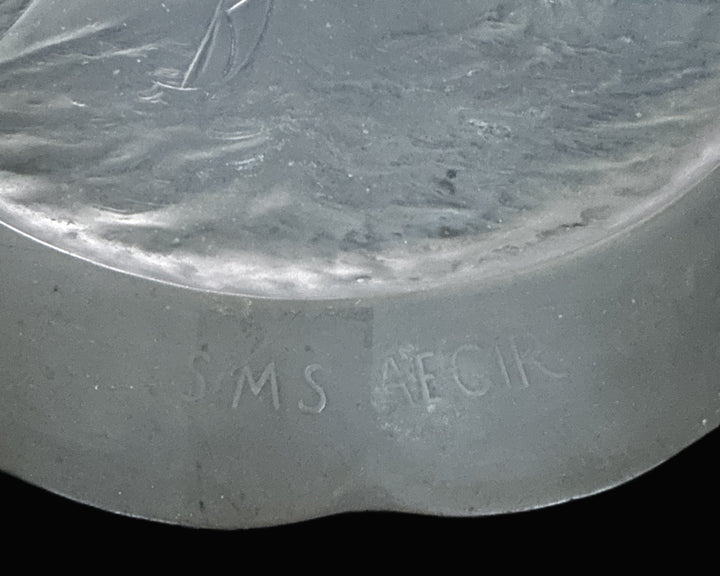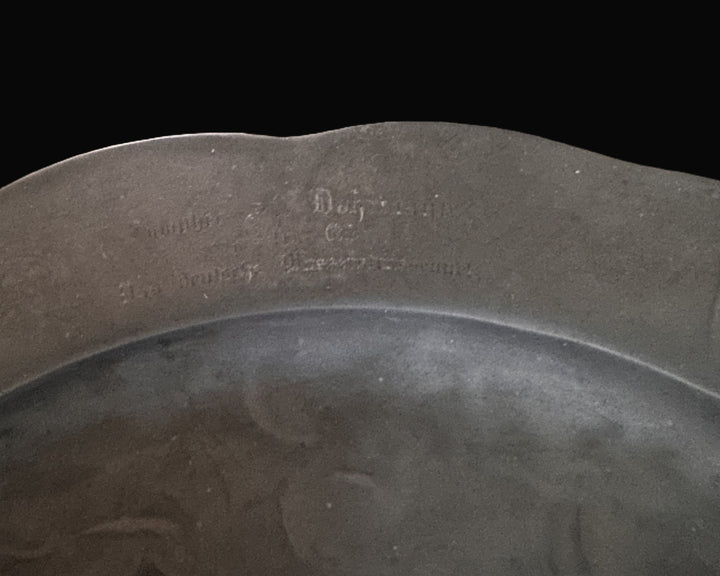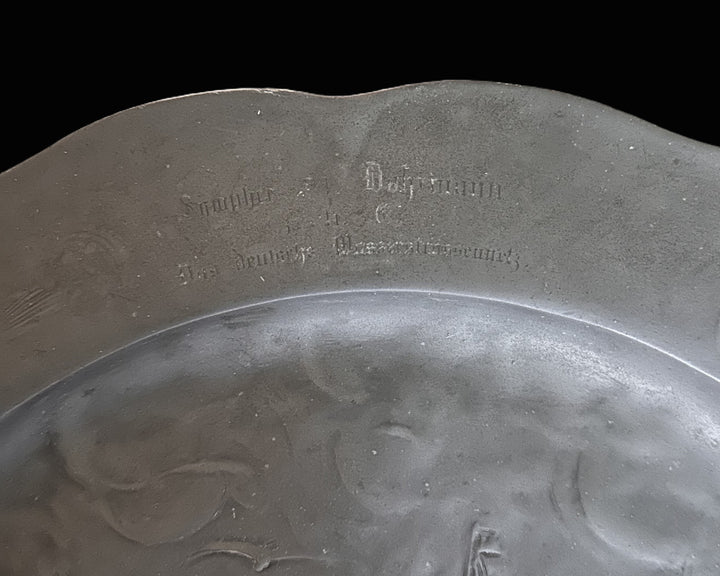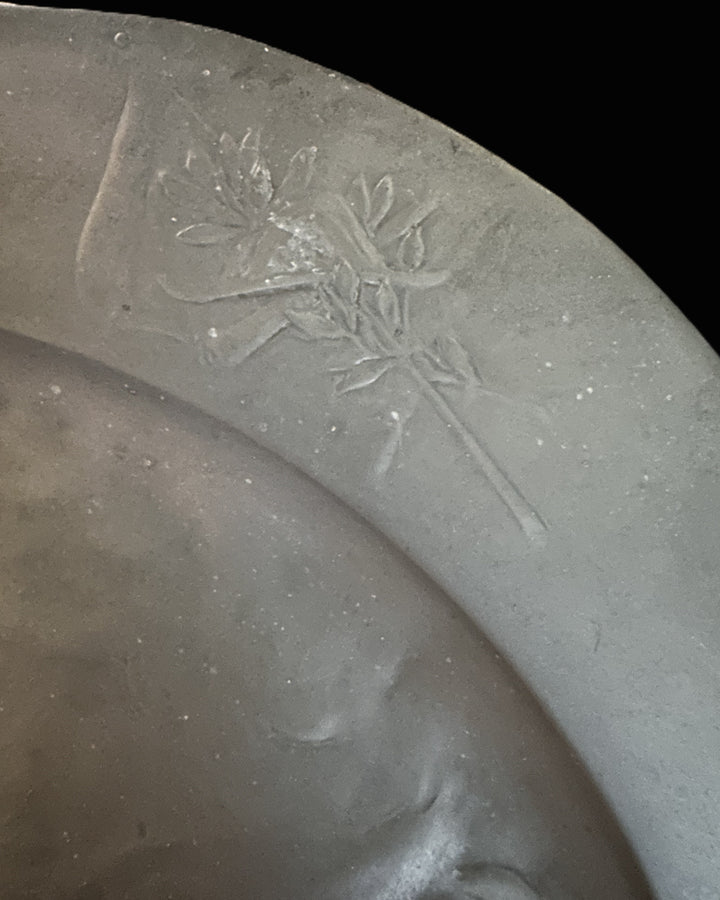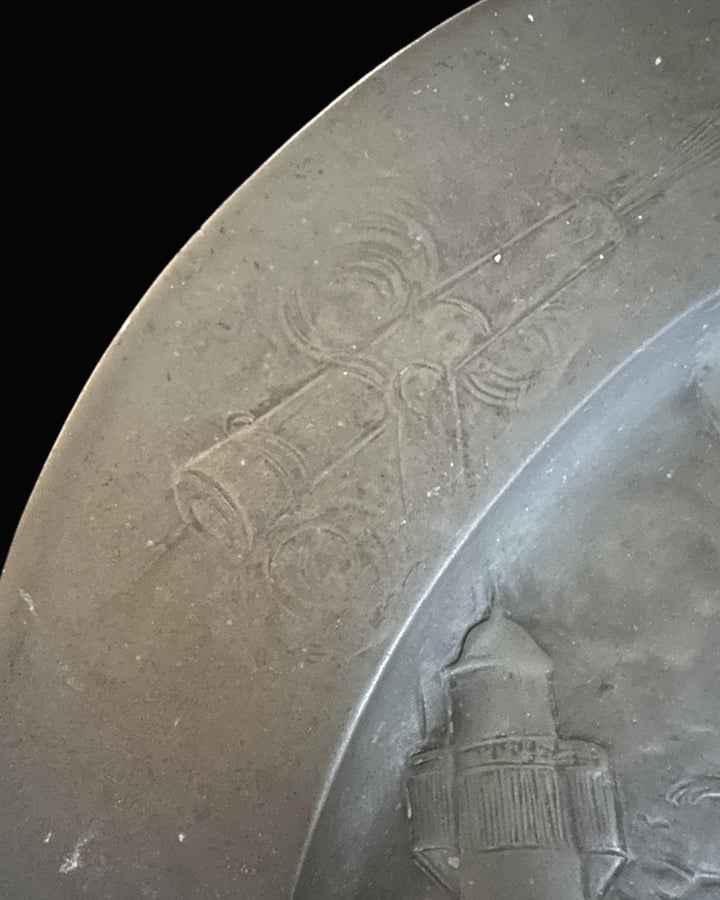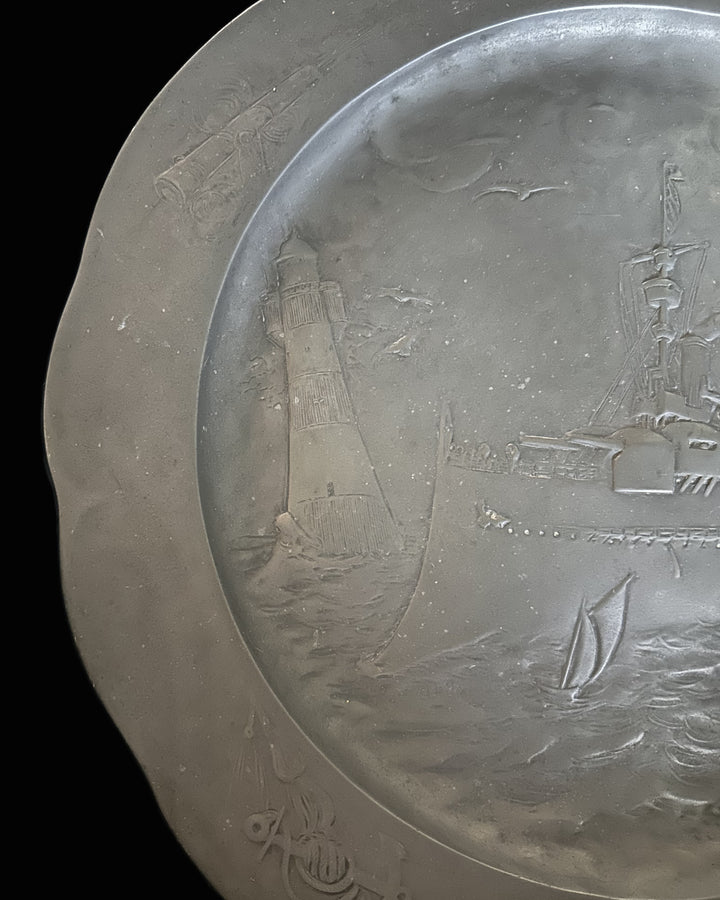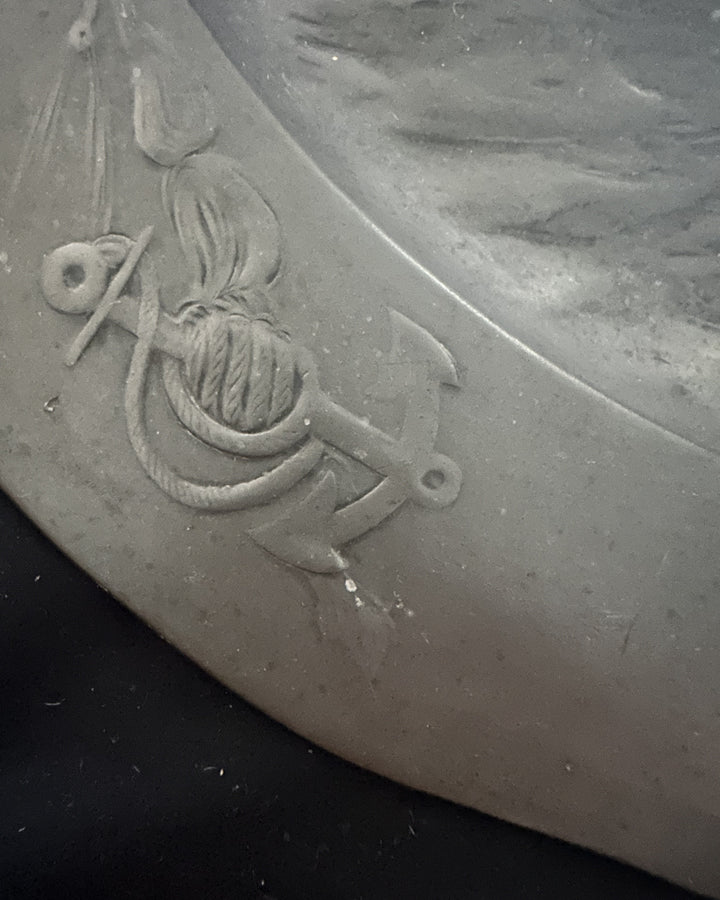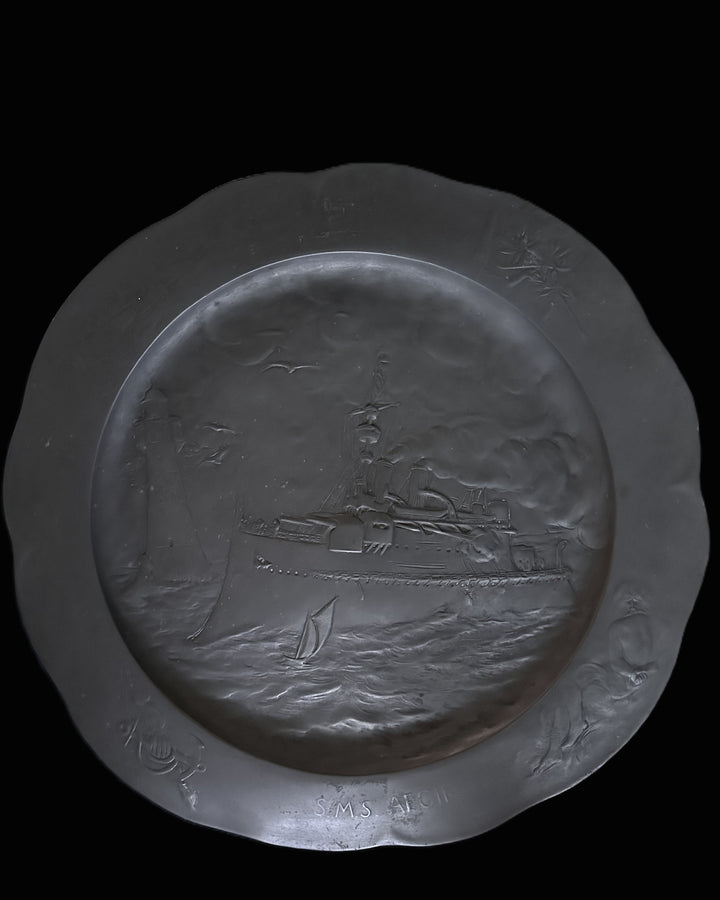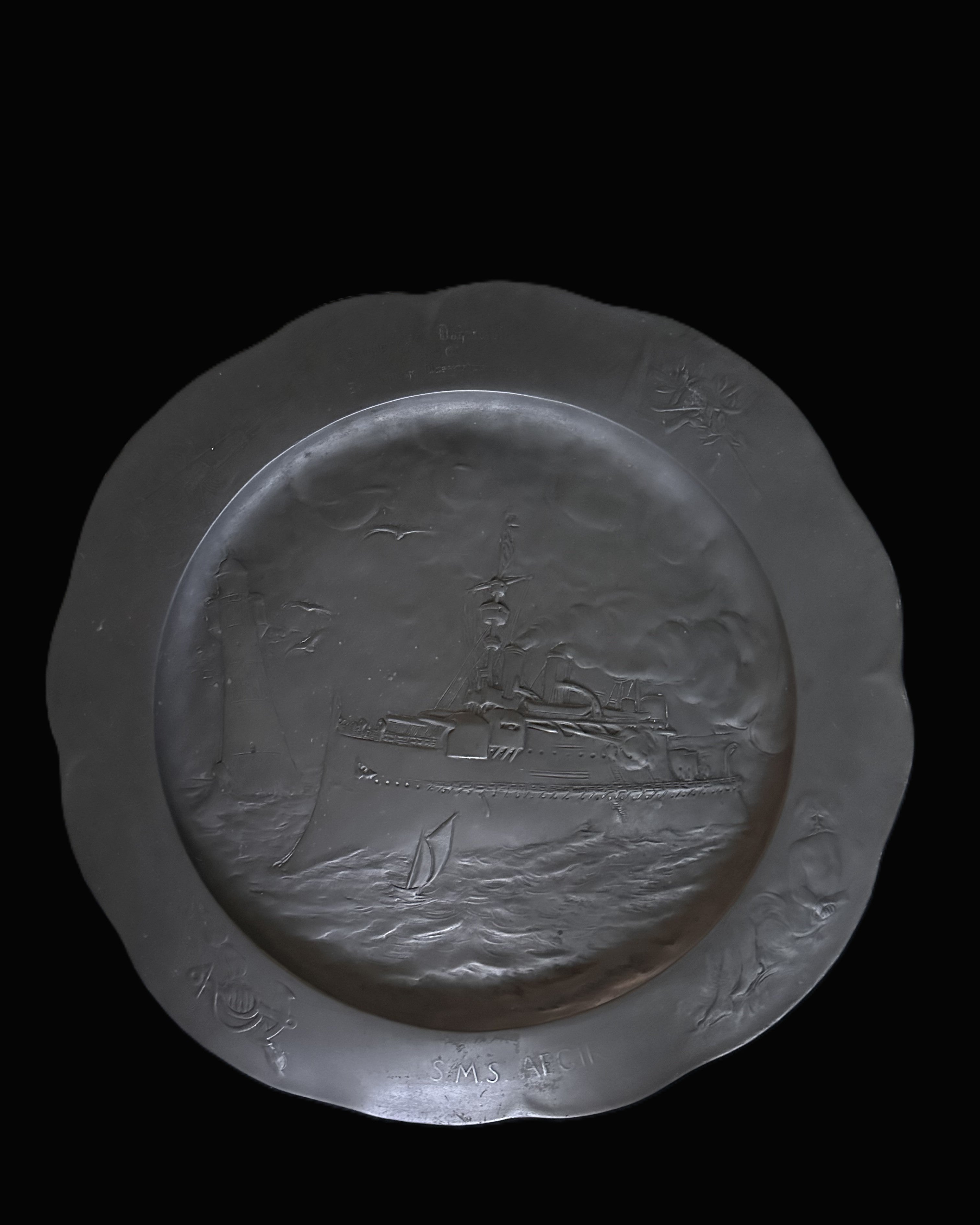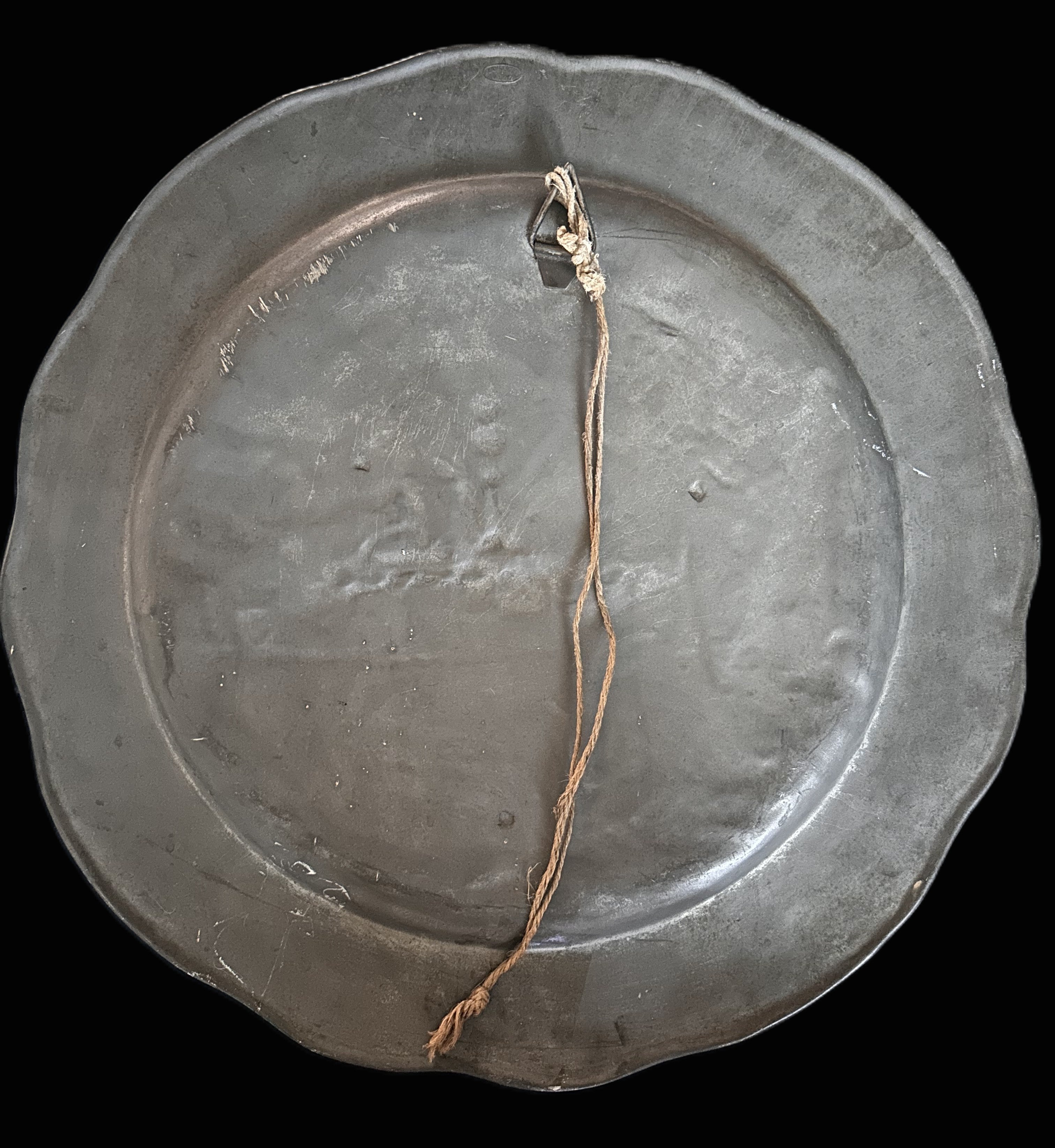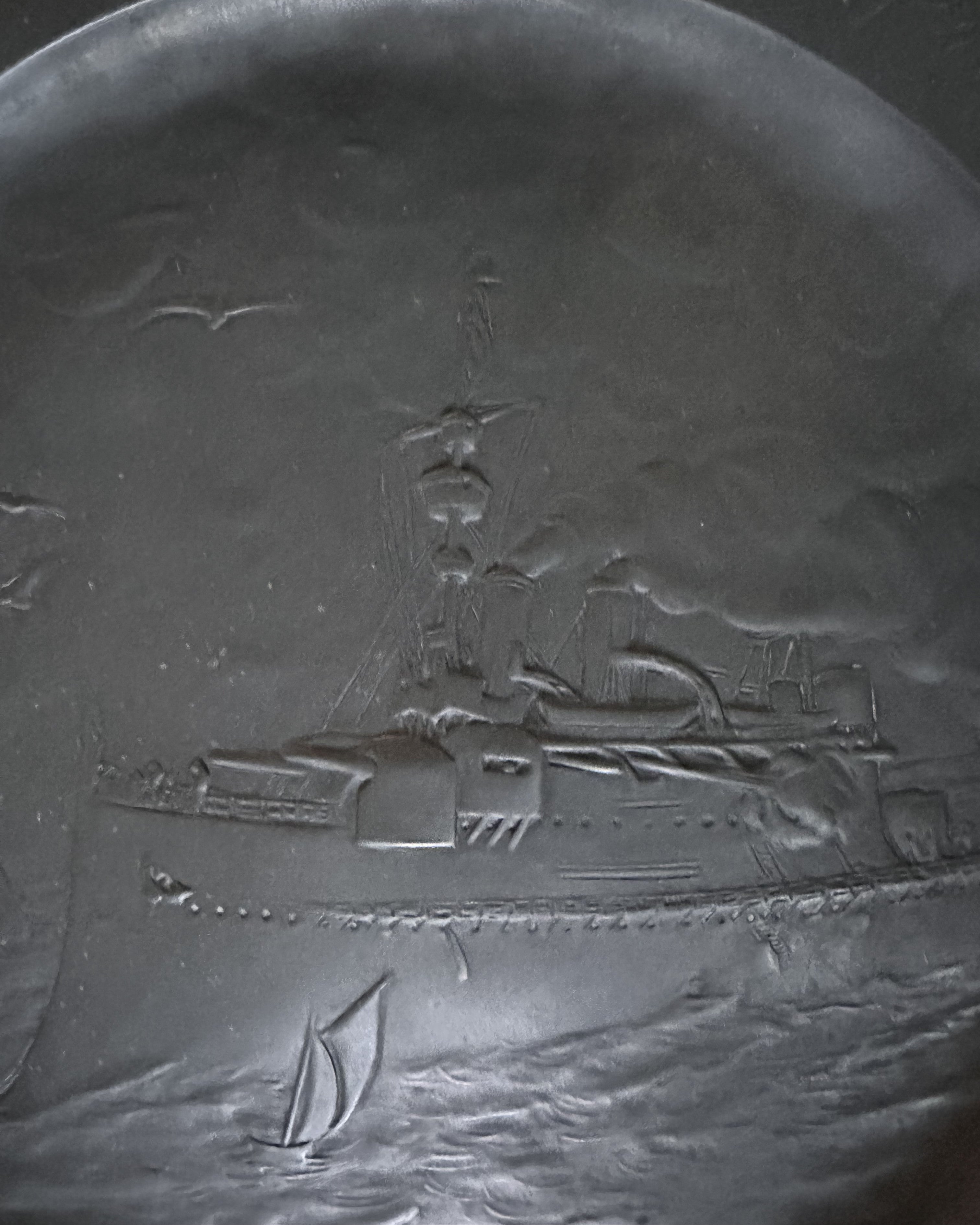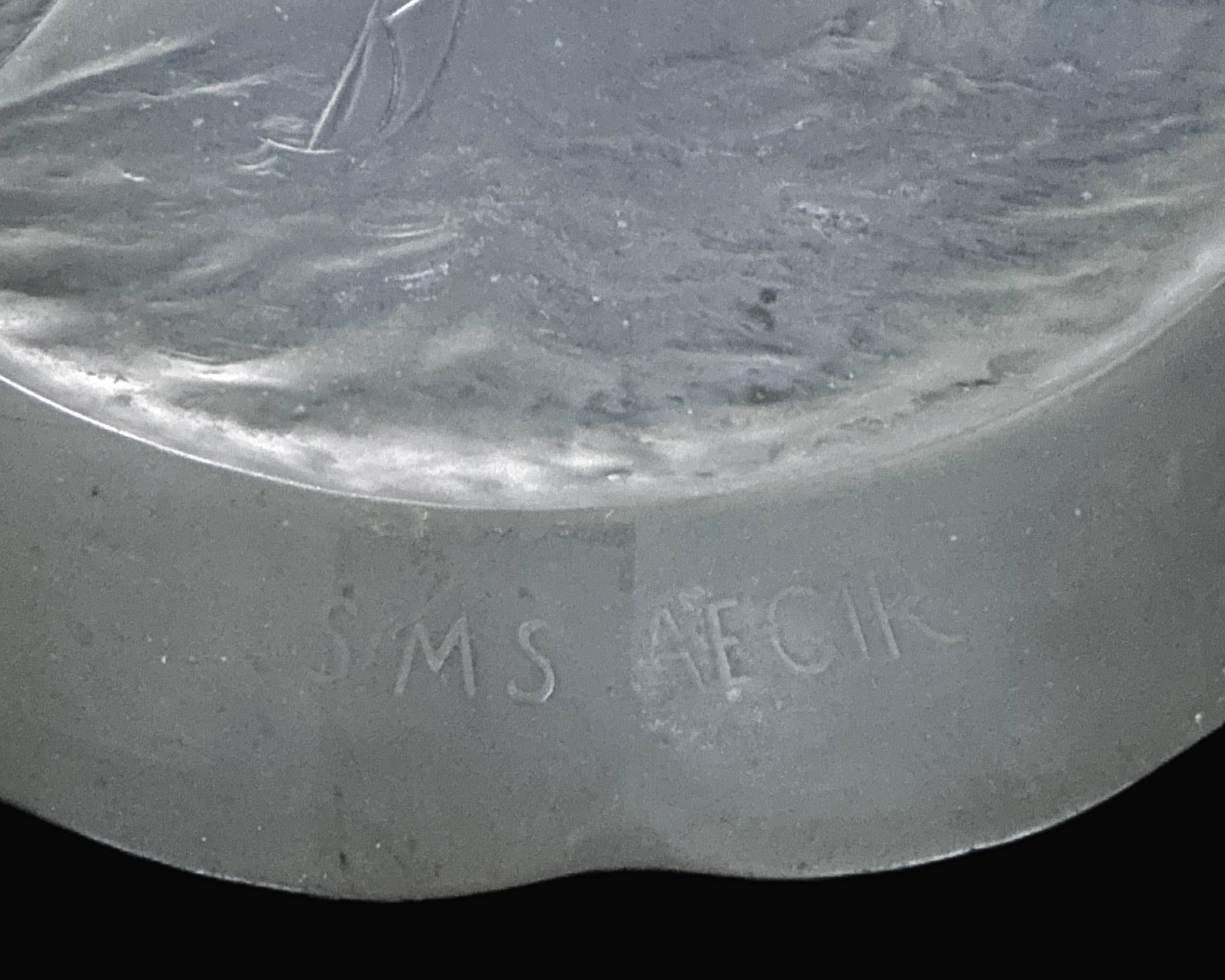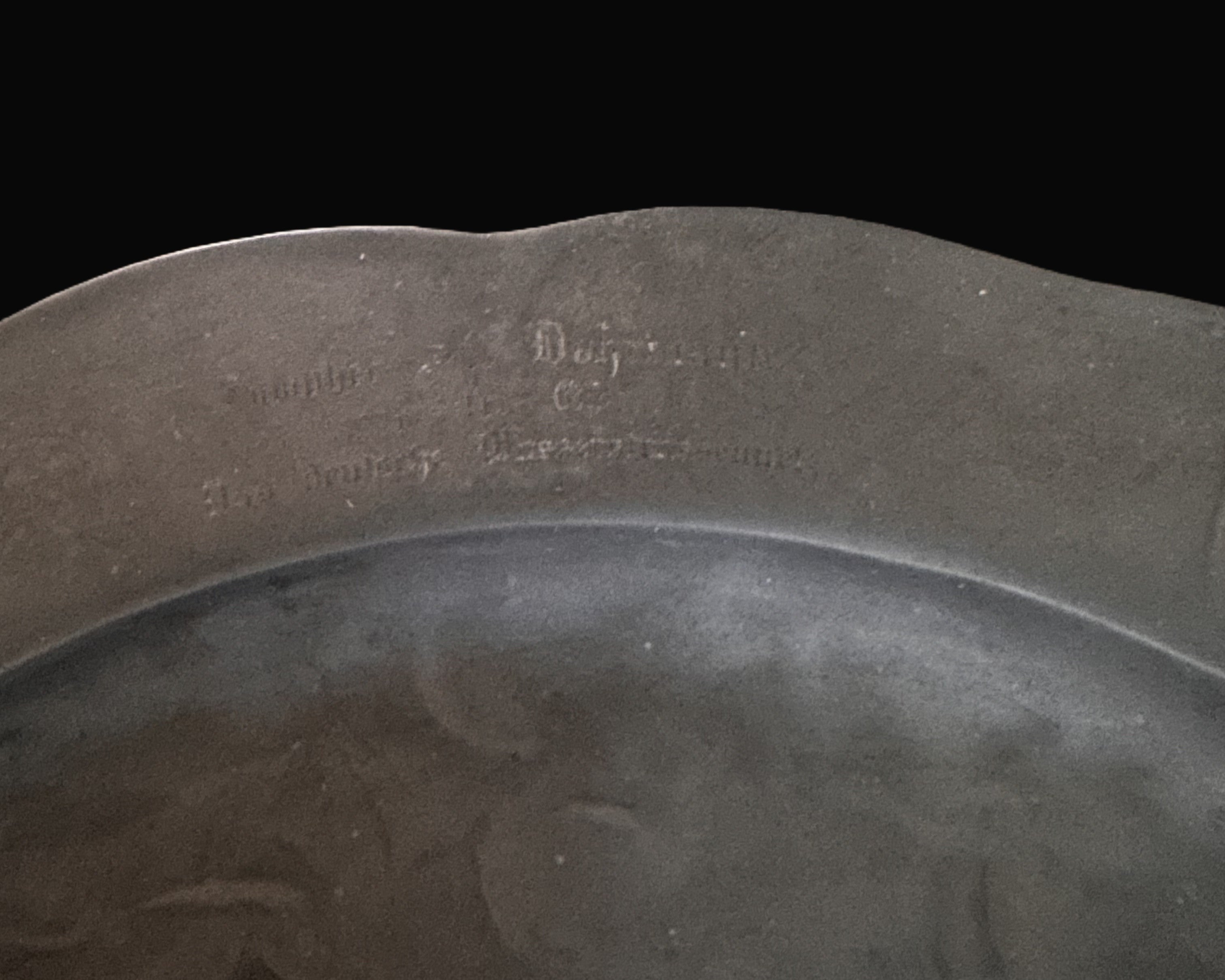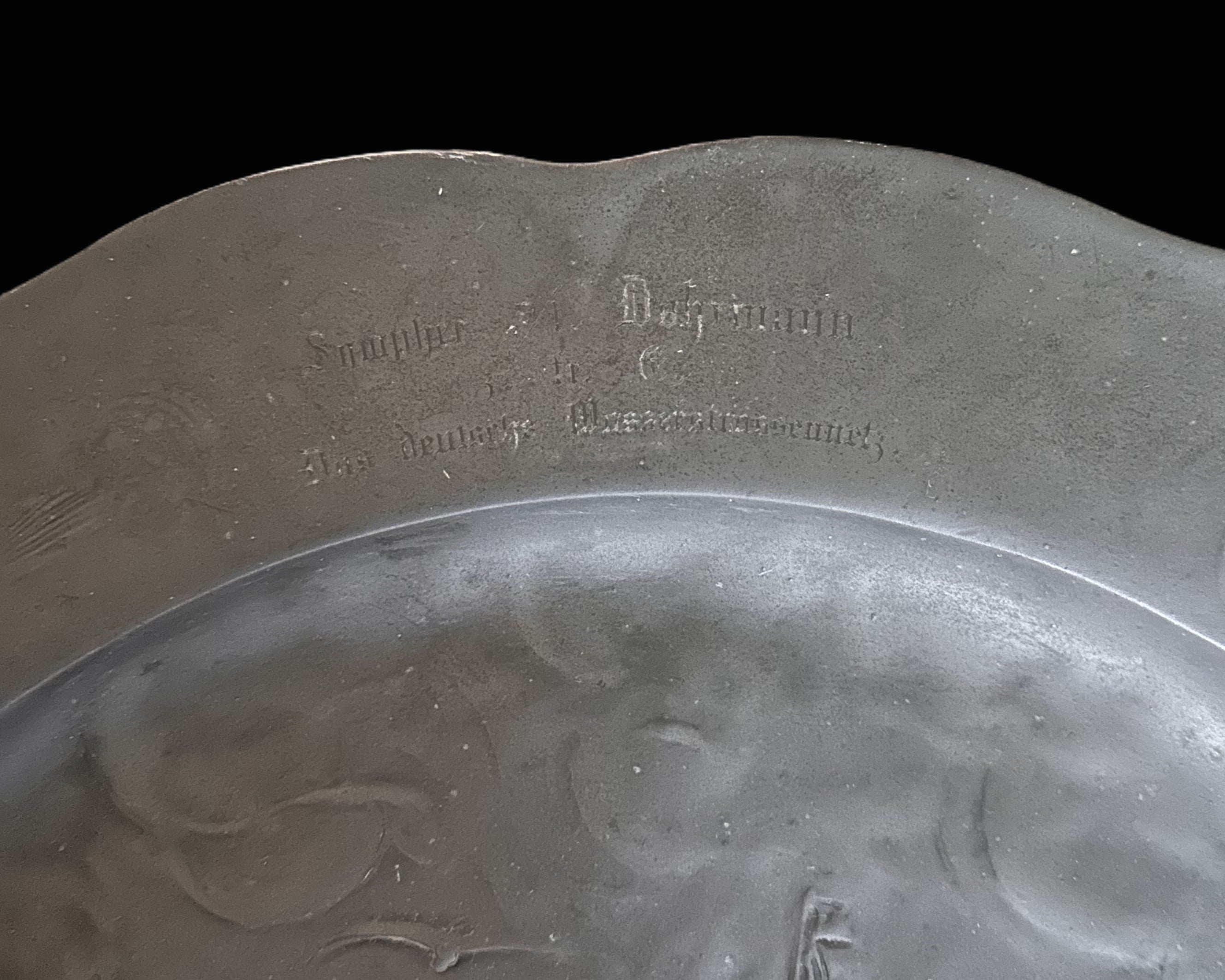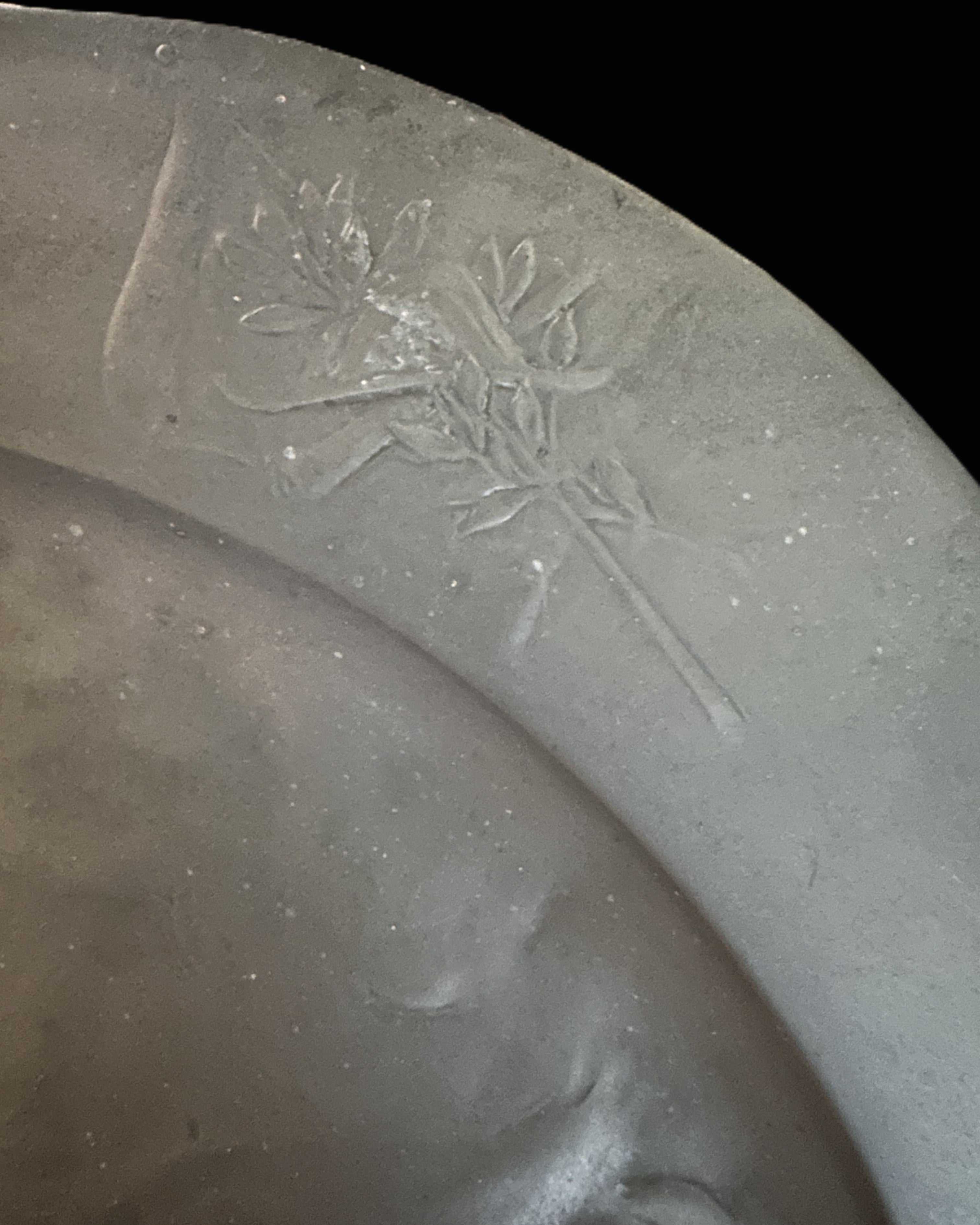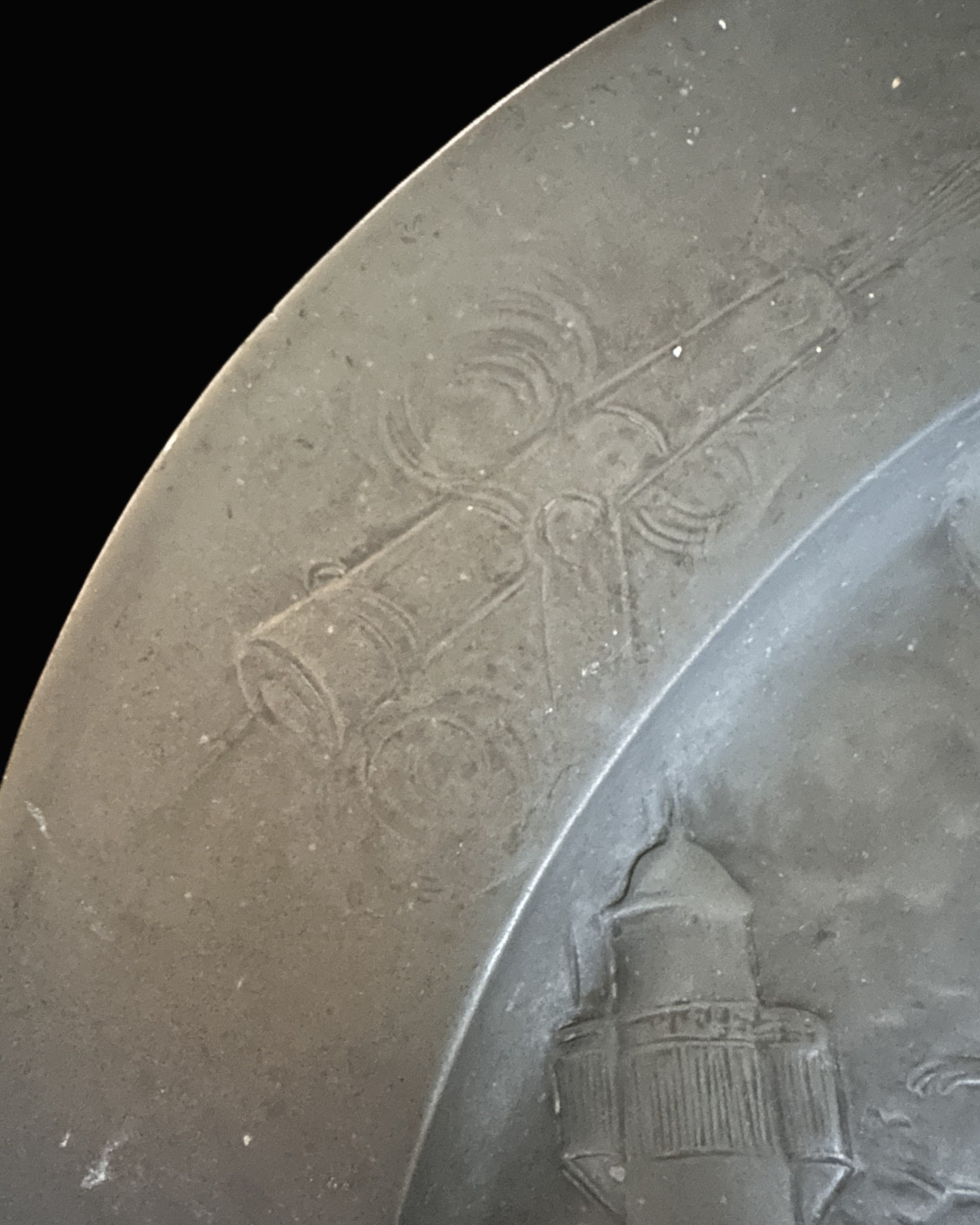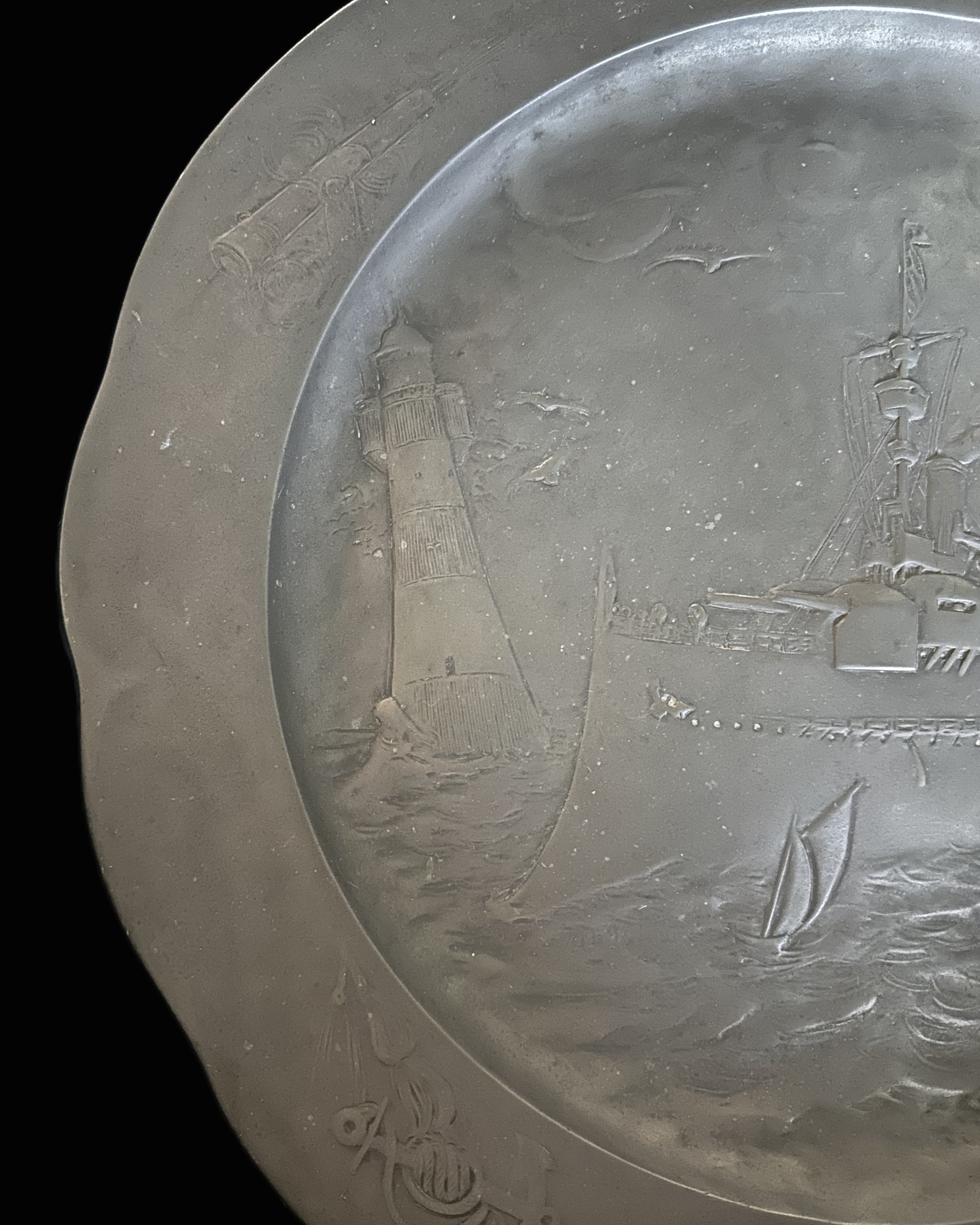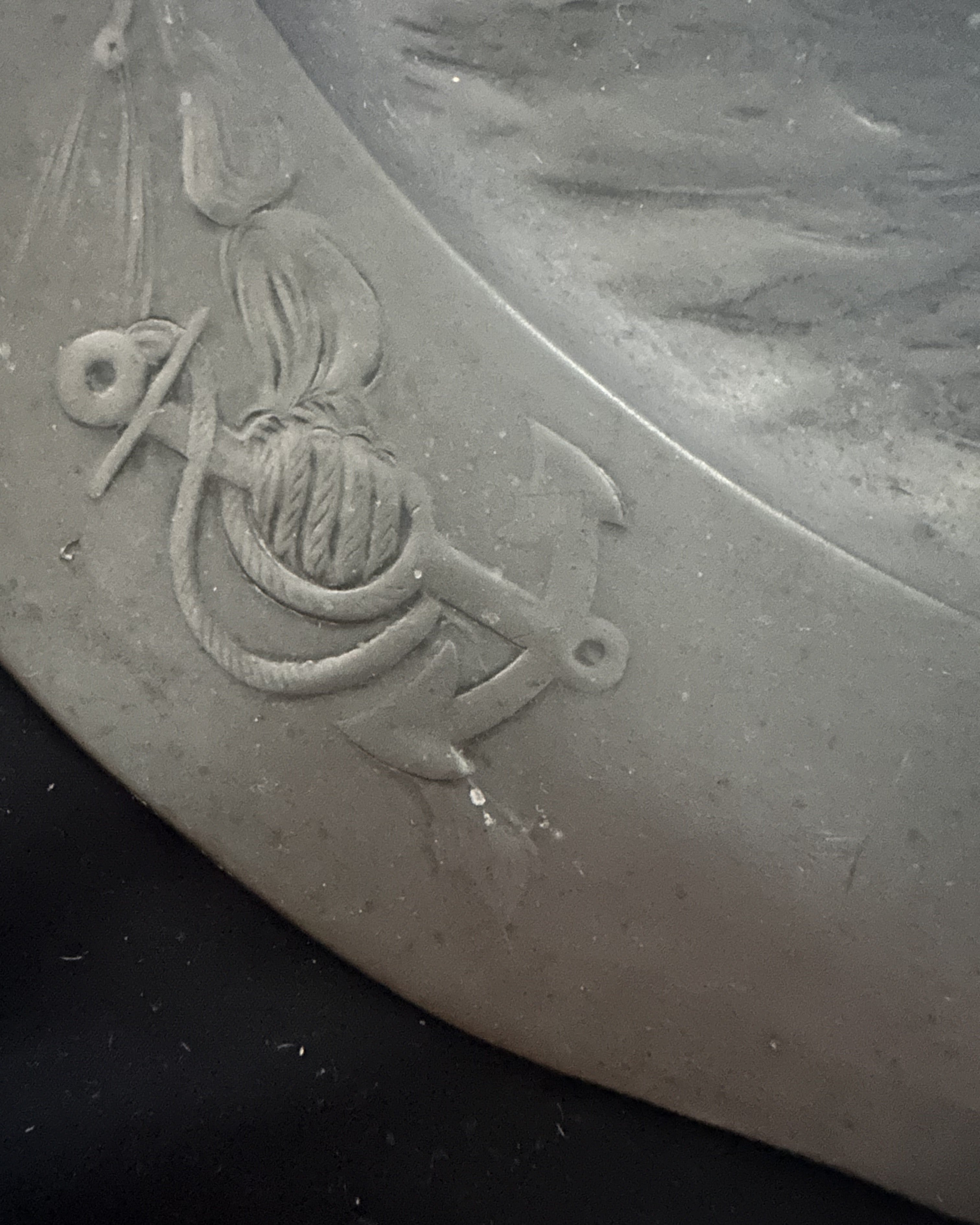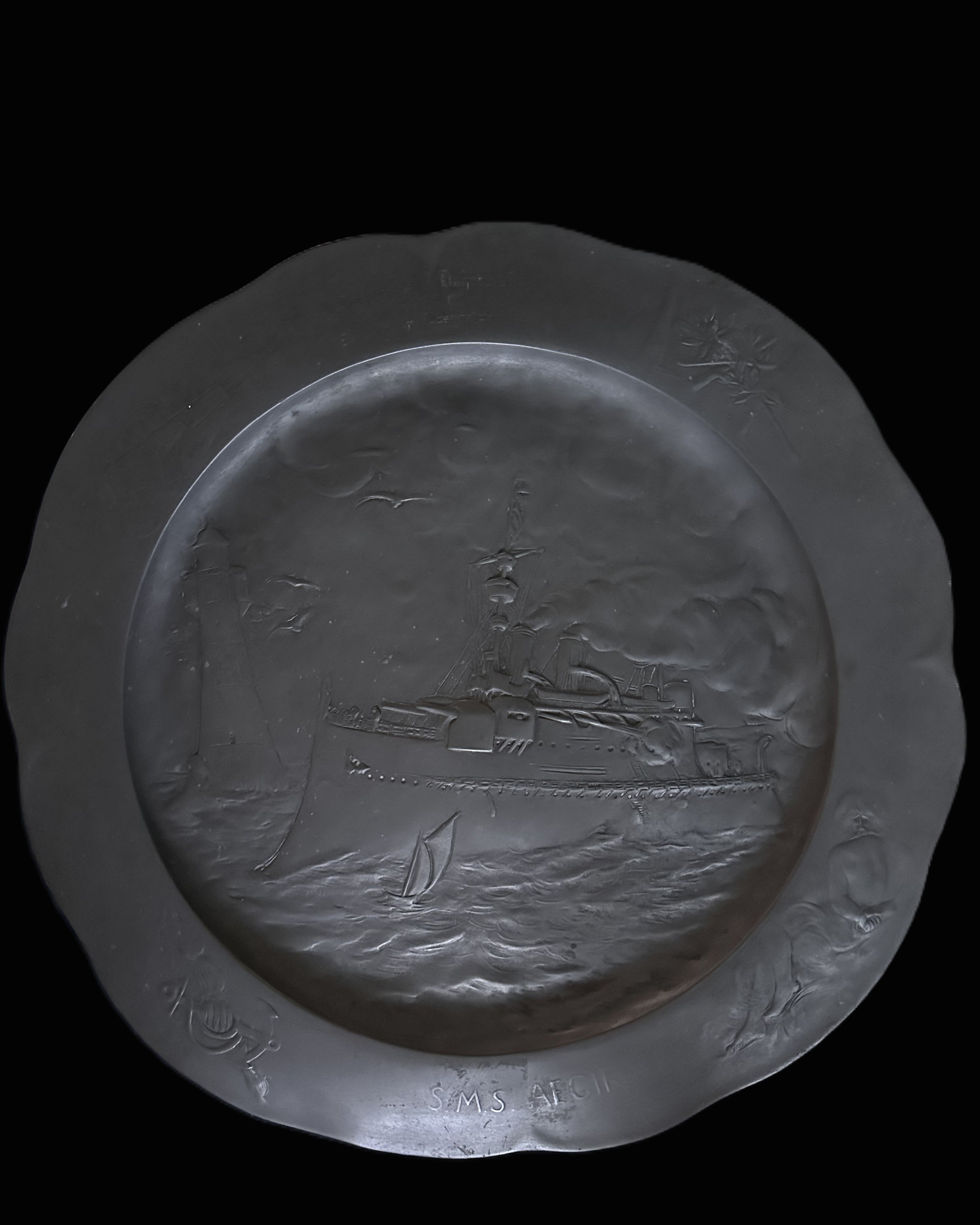Imperial German Navy Commemorative Pewter Plate – SMS Ägir Coastal Defense Ship
- Regular price
- $395.00
- Sale price
- $395.00
- Regular price
SKU: 18-81 A
This pewter wall plate commemorates the SMS Ägir, a Siegfried-class coastal defense ship of the Kaiserliche Marine. The vessel was laid down in 1892, launched in 1893, and entered active service in 1896, part of a fleet of eight ships designed to defend Germany’s relatively short but strategically vital North Sea and Baltic coastlines.
The plate’s central motif shows the SMS Ägir at sea, rendered in relief with remarkable detail: the heavy casemate-mounted guns, prominent funnels, and bow wave emphasize her power. The surrounding rim is decorated with maritime imagery — a lighthouse guiding the vessel, an anchor with coiled rope symbolizing naval steadfastness, and a signal cannon recalling naval gunnery.
The ship’s name “S.M.S. ÄGIR” is boldly embossed at the bottom. At roughly 20 inches in diameter, the piece has a scalloped edge and retains its original hanging cord, evidence that it was intended for display — possibly in an officer’s home or naval wardroom.
Historical Significance of SMS Ägir:
The Ägir belonged to the Siegfried-class of coastal defense ships, a uniquely German naval experiment of the late 19th century. At a time when Great Britain pursued global sea dominance with massive battleships, Germany — then still building its naval doctrine under Kaiser Wilhelm II — invested in compact, heavily armored ships designed to defend against incursions close to German waters. With a displacement of only 4,000 tons, Ägir was far smaller than contemporary battleships, but her 24 cm (9.4 in) guns and thick armor made her a formidable opponent in coastal defense scenarios. During the First World War, the Ägir and her sisters were mobilized for defensive duties in the North Sea. Although they never engaged in major fleet actions like Jutland, their very presence forced the Royal Navy to account for them in coastal operations. By 1916, as dreadnoughts and battlecruisers made ships like Ägir obsolete, she was relegated to secondary roles, including serving as a training vessel and later as a barracks ship. She remained in service until 1922, when she was struck from the naval register and scrapped in accordance with the Treaty of Versailles.
Collector’s Note:
Commemorative plates such as this one were often purchased by sailors themselves or given as presentation pieces, intended to preserve the pride of service aboard a named vessel. Plates bearing the names of lesser-known ships like Ägir are rarer than those of the larger German capital ships, making this a particularly desirable example. It captures both the artistry of German pewterwork and the historical narrative of a naval force transitioning from coastal defense to a global blue-water fleet.
Condition: Very good, with even dark patina, light handling wear, and crisp detail retention. No major cracks or repairs are evident.
